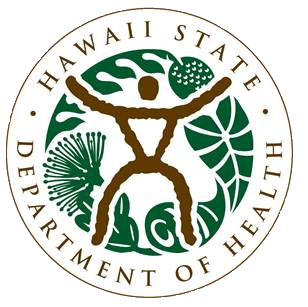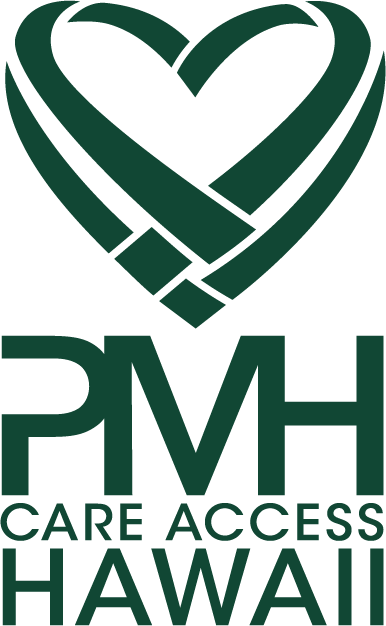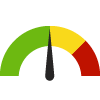Child & Family Mental Health Tracker
Mental health is part of everyday life and overall health in all stages of life, from keiki to kupuna, and includes emotional, psychological, and social well-being. While positive mental health has been linked to optimism, self-esteem, and healthy relationships1, mental health complications can greatly impact physical health, putting an individual at risk for other health conditions.2
The COVID-19 pandemic has heightened interest in mental health issues. This child and family mental health data tracker brings together information, in an easy to review format, from national and state population-based surveys focusing on measures that impact women, children, and families. Healthy People 2030 targets are provided when available.
For data on service utilization for substance use, mental health, and crisis care see the Department of Health Adult Mental Health. 

Click on any of the health indicators to learn more about how it is defined and collected, and to view trends in tables, charts, and comparison data.
This tracker is a collaboration between the Hawai‘i State Department of Health Family Health Services Division and the Pediatric Mental Health Care Access program. Click here for more information about this tracker and how to use it.
Additional sources of mental health data are available here.
References:
1. Connell, J., Brazier, J., O’Cathain, A. et al. Quality of life of people with mental health problems: a synthesis of qualitative research. Health Qual Life Outcomes 10, 138 (2012). https://doi.org/10.1186/1477-7525-10-138
2. Center for Disease Control and Prevention (CDC). About Mental Health. Published November 23, 2021. Accessed March 2023. https://www.cdc.gov/mentalhealth/learn/index.htm
Indicator Gauge Icon Legend
Legend Colors
Red is bad, green is good, blue is not statistically different/neutral.
Compared to Distribution
 the value is in the best half of communities.
the value is in the best half of communities.
 the value is in the 2nd worst quarter of communities.
the value is in the 2nd worst quarter of communities.
 the value is in the worst quarter of communities.
the value is in the worst quarter of communities.
Compared to Target
 meets target;
meets target;  does not meet target.
does not meet target.
Compared to a Single Value
 lower than the comparison value;
lower than the comparison value;
 higher than the comparison value;
higher than the comparison value;
 not statistically different from comparison value.
not statistically different from comparison value.
Trend

 non-significant change over time;
non-significant change over time; 
 significant change over time;
significant change over time;  no change over time.
no change over time.
Compared to Prior Value
 higher than the previous measurement period;
higher than the previous measurement period;
 lower than the previous measurement period;
lower than the previous measurement period;
 no statistically different change from previous measurement period.
no statistically different change from previous measurement period.
State: Hawaii
Depression and Suicide
State: Hawaii Young Teens with Ever Depression
State: Hawaii Young Teens with Ever Depression


State: Hawaii Teens with Recent Depression
State: Hawaii Teens with Recent Depression



State: Hawaii Adults Ever Diagnosed with Depression
State: Hawaii Adults Ever Diagnosed with Depression



State: Hawaii Adult Poor Mental Health: 14+ Days
State: Hawaii Adult Poor Mental Health: 14+ Days



State: Hawaii Young Teens with Suicidal Thoughts
State: Hawaii Young Teens with Suicidal Thoughts


State: Hawaii Teens with Suicidal Thoughts
State: Hawaii Teens with Suicidal Thoughts



State: Hawaii LGB Teens with Suicidal Thoughts
State: Hawaii LGB Teens with Suicidal Thoughts




State: Hawaii Young Teens Who Ever Attempted Suicide
State: Hawaii Young Teens Who Ever Attempted Suicide


State: Hawaii Teens Who Attempted Suicide
State: Hawaii Teens Who Attempted Suicide



State: Hawaii Suicide Death Rate
State: Hawaii Suicide Death Rate




State: Hawaii
Child Mental Health Conditions & Treatment











State: Hawaii
Attention Deficit Hyperactivity Disorder
State: Hawaii Children 3-17 with ADD/ADHD
State: Hawaii Children 3-17 with ADD/ADHD






State: Hawaii
Parent Mental Health
State: Hawaii Women with Depression Before Pregnancy
State: Hawaii Women with Depression Before Pregnancy


State: Hawaii Women with Post-Partum Depression
State: Hawaii Women with Post-Partum Depression





State: Hawaii Mental Health Status of Mother
State: Hawaii Mental Health Status of Mother



State: Hawaii Mental Health Status of Father
State: Hawaii Mental Health Status of Father



State: Hawaii
Adverse Childhood Experiences
State: Hawaii Adults with 4+ Adverse Childhood Experiences
State: Hawaii Adults with 4+ Adverse Childhood Experiences

State: Hawaii Adults Who Grew Up with Mental Illness in Household
State: Hawaii Adults Who Grew Up with Mental Illness in Household

State: Hawaii Adults Who Grew Up with Problem Drinking in Household
State: Hawaii Adults Who Grew Up with Problem Drinking in Household

State: Hawaii Adults Who Grew Up with Drug Use in Household
State: Hawaii Adults Who Grew Up with Drug Use in Household

State: Hawaii
Alcohol and Drug Use
State: Hawaii Young Teens Who Use Alcohol
State: Hawaii Young Teens Who Use Alcohol



State: Hawaii Teens Who Use Alcohol
State: Hawaii Teens Who Use Alcohol




State: Hawaii Adults Who Drink Excessively
State: Hawaii Adults Who Drink Excessively






State: Hawaii Young Teens Who Use Marijuana
State: Hawaii Young Teens Who Use Marijuana



State: Hawaii Teens Who Use Marijuana
State: Hawaii Teens Who Use Marijuana




State: Hawaii Adults Who Use Marijuana
State: Hawaii Adults Who Use Marijuana

State: Hawaii Teens Who Ever Used illicit drugs
State: Hawaii Teens Who Ever Used illicit drugs


State: Hawaii Adults Who Use Illicit Drugs
State: Hawaii Adults Who Use Illicit Drugs



State: Hawaii
Bullying
State: Hawaii Young Teens Who Are Bullied
State: Hawaii Young Teens Who Are Bullied


State: Hawaii Teens Who Are Bullied
State: Hawaii Teens Who Are Bullied



State: Hawaii Young Teens Who Skipped School for Safety
State: Hawaii Young Teens Who Skipped School for Safety


State: Hawaii Teens Who Skipped School for Safety
State: Hawaii Teens Who Skipped School for Safety



State: Hawaii
Protective Factors
State: Hawaii Young Teens with an Adult They Can Talk To
State: Hawaii Young Teens with an Adult They Can Talk To



State: Hawaii Teens with an Adult They Can Talk To
State: Hawaii Teens with an Adult They Can Talk To



State: Hawaii Young Teens Who Get Mental Health Help They Need
State: Hawaii Young Teens Who Get Mental Health Help They Need

State: Hawaii Teens Who Get Mental Health Help They Need
State: Hawaii Teens Who Get Mental Health Help They Need

State: Hawaii
Access to Mental Health Services
State: Hawaii Adults who Bought Medications for Anxiety or Depression
State: Hawaii Adults who Bought Medications for Anxiety or Depression


State: Hawaii Households that Received Mental Healthcare Services
State: Hawaii Households that Received Mental Healthcare Services






State: Hawaii Mental Health Provider Rate
State: Hawaii Mental Health Provider Rate




